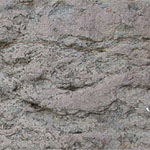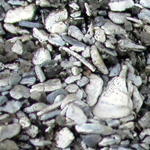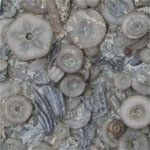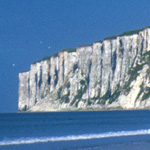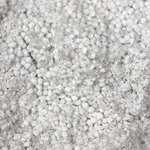| Most ancient limestones that we see exposed on land formed in warm, shallow, tropical seas. Limestones form most readily on shallow continental shelves where sunlight can reach the bottom and where there are few clastic inputs to dilute the carbonate sediments.
Much limestone forms from bioclastic debris released from the decay of calcareous algae and the shells of a wide range of invertebrates (corals, clams, etc.) Fine-grained limestone and oolites may also form through inorganic precipitation of CaCO3. In contrast to clastic sediments, which are normally carried to the site of deposition by river or oceanic currents, carbonate sediments usually produced at or near the site of deposition. This allows carbonate systems to build a platform that rises from the continental to just below sea level. The Bahamas is an excellent example of a modern carbonate platform environment.
|

